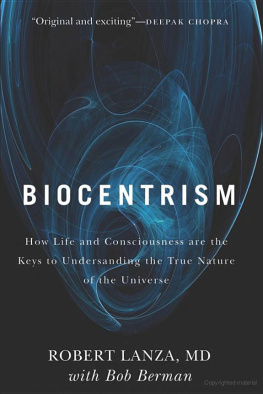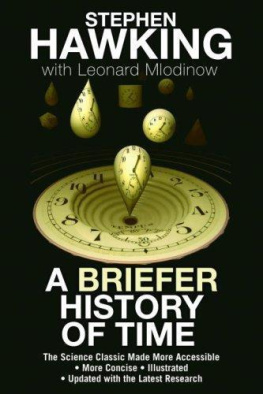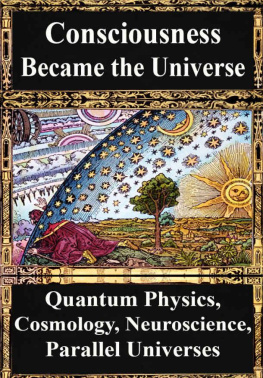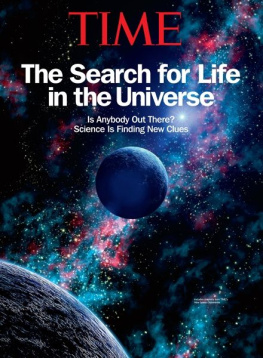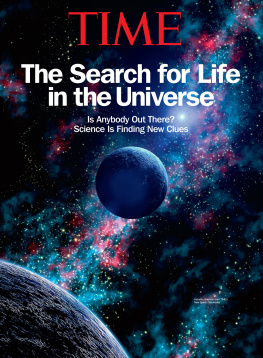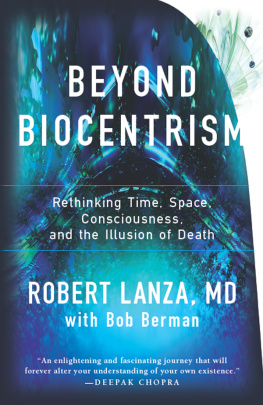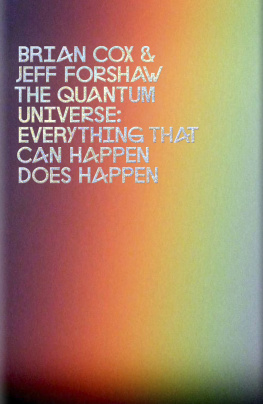ACKNOWLEDGMENTS
The authors would like to thank the publisher, Glenn Yeffeth, and Nana Naisbitt, Robert Faggen, and Joe Pappalardo for their valuable assistance with the book. We would also like to thank Alan McKnight for the illustrations and Ben Mathiesen for his help with the material in the appendix. And, of course, the book wouldnt be possible without the help of our agent, Al Zuckerman.
Various portions of the material in this book appeared separately in the New Scientist, the American Scholar, the Humanist, Perspectives in Biology and Medicine, Yankee magazine, Cappers, Grit, the World & I, Pacific Discovery, and in several literary magazines, including the Cimarron Review, the Ohio Review, the Antigonish Review, the Texas Review, and High Plains Literary Review.
APPENDIX 1
THE LORENTZ TRANSFORMATION
One of the most famous formulas in science came from the dazzling mind of Hendrik Lorentz, near the end of the nineteenth century. It forms the backbone of relativity, and shows us the fickle nature of space, distance, and time. It may seem complicated, but it is not:
T = t1-v2/c2
Weve expressed this for computing the change in the perceived passage of time. It is actually much simpler than it appears. Delta or means change so T is the change in your passage of timewhat you yourself perceive. Small t represents the time passing for those you left behind on Earth, lets say one yearso what were after is how much time passes for you (T) while one year elapses for everyone back in Brooklyn. This simple one year of t (in this example) should be multiplied by the meat-and-potatoes of the Lorentz transformation, which is the square root of 1, from which we subtract the following fraction: v2, which is your speed multiplied by itself, divided by c2, which is the speed of light multiplied by itself. If all speeds are expressed in matching units, this equation will tell you how your time slows down.
Heres an example: If you travel twice the speed of a bullet, or one mile a second, then v2 is 1 1 or 1, which is divided by the speed of light (186,282 miles per second) times itself, yielding 35,000,000,000 and yielding a fraction so small its essentially nothing at all. When this nothingness is subtracted from the initial 1 in the equation, its still essentially 1 and because the square root of 1 is still 1, and remains 1 when multiplied by the one year that passed back on Earth, the answer naturally remains 1. That means that traveling at twice the speed of a bullet, or one mile a second, while it may seem fast, is actually too small to change the passage of time relativistically.
Now consider a fast speed. If youve managed to travel at lightspeed, the fraction v2/c2 becomes 1/1 or 1. The expression inside the square root sign is then 1-1, which is 0. The square root of 0 is 0, so now you multiply 0 by the time experienced back on Earth, and the answer is 0. No time. Time has been frozen for you if you move at lightspeed. Thus, you can insert any number for v and the formula will yield how much time passes for a traveling astronaut while a given time passes on Earth. This same formula also calculates the decrease in length for a traveler, if one substitutes L (length) instead of V (speed). It will also work to compute mass increase the same way, except at the conclusion one must divide the result into 1 (find the reciprocal) because unlike time and length, which decreases, mass increases with greater velocity.
APPENDIX 2
EINSTEINS RELATIVITY AND BIOCENTRISM
The space that plays one of central roles in Einsteins relativity can be easily derived scientifically to be replaced as a standalone entity, leaving the practical conclusions of relativity intact and still functioning. What follows is a physics-based explanation for this, with most math eliminated. Nonetheless, it is rather dry, and we recommend it mainly for occasions when unexpectedly stuck in a bus terminal for more than two or three hours.
If we supplement the propositions of Euclidean geometry by the single proposition that two points on a practically rigid body always correspond to the same distance (line-interval), independently of any changes in position to which we may subject the body, the propositions of Euclidean geometry then resolve themselves into propositions on the relative positions of practically rigid bodies. (Relativity)
One may find fault with this definition of space. From a practical standpoint, this founds the common conception of space on an unphysical idealization: the perfectly rigid body. The fact that one specifies practically rigid bodies does not protect ones theory from the consequences of this idealization. To Einstein, space is something you measure with physical objects, and his objective mathematical definition of space relies on perfectly rigid measuring rods.
One might claim that these rods can be made arbitrarily small (the smaller, the more rigid), but we now know that sufficiently microscopic measuring rods become less rigid, not more. The idea of measuring space by lining up individual atoms or electrons is absurd. The best distance measurement that Einsteins construction of special relativity can hope to achieve is a consistent statistical average. Even this ideal is compromised by the theory itself, however, which recognizes that these measurements depend on the relative state of motion between the observer and the bodies being measured.
From a philosophical standpoint, Einstein follows a grand tradition of physicists by assuming that his own sensory phenomena correspond to an objective external reality. However, the concept of objective mathematically idealized space has outlived its usefulness. We propose that space is more appropriately described as an emergent property of external reality, one that is fundamentally dependent on consciousness.
As a first step to this goal, let us consider the theory of special relativity in detail and ask whether it can be constructed sensibly without relying on rigid measuring rods or even physical bodies. Lets look at Einsteins two assumptions:
1. The speed of light in vacuum is the same for all observers.
2. The laws of physics are the same for all observers in inertial motion.
The concept of speed, which implies objective space, is integral to both assumptions. It is hard to get away from this idea because one of the simplest and easiest things we can measure about the objects of our experience is their spatial characteristics. If we abandon the a priori assumption of objective space, however, where does that leave us?
It leaves us with only two things: time and substance. If we turn inward to examine the content of our consciousness, we see that space is not a necessary part of the equation. It is meaningless to claim that our consciousness has any physical extent of its own. We know that our state of consciousness changes (otherwise, thought would not be fleeting), so it makes sense to propose the appearance of time, because change is what we normally construe as time.
From a physical standpoint, the substance of consciousness must be the same as the substance of external reality, which is to say the grand unified field and its various low-energy incarnations. One of these incarnations is the vacuum field, because truly empty space has now been relegated to the compost heap of science history.
In addition, we may propose the existence of light or, more generally speaking, a persistent, self-propagating change in the grand unified field. From this point forward, to simplify the language of this discussion, well simply refer to the grand unified field as

